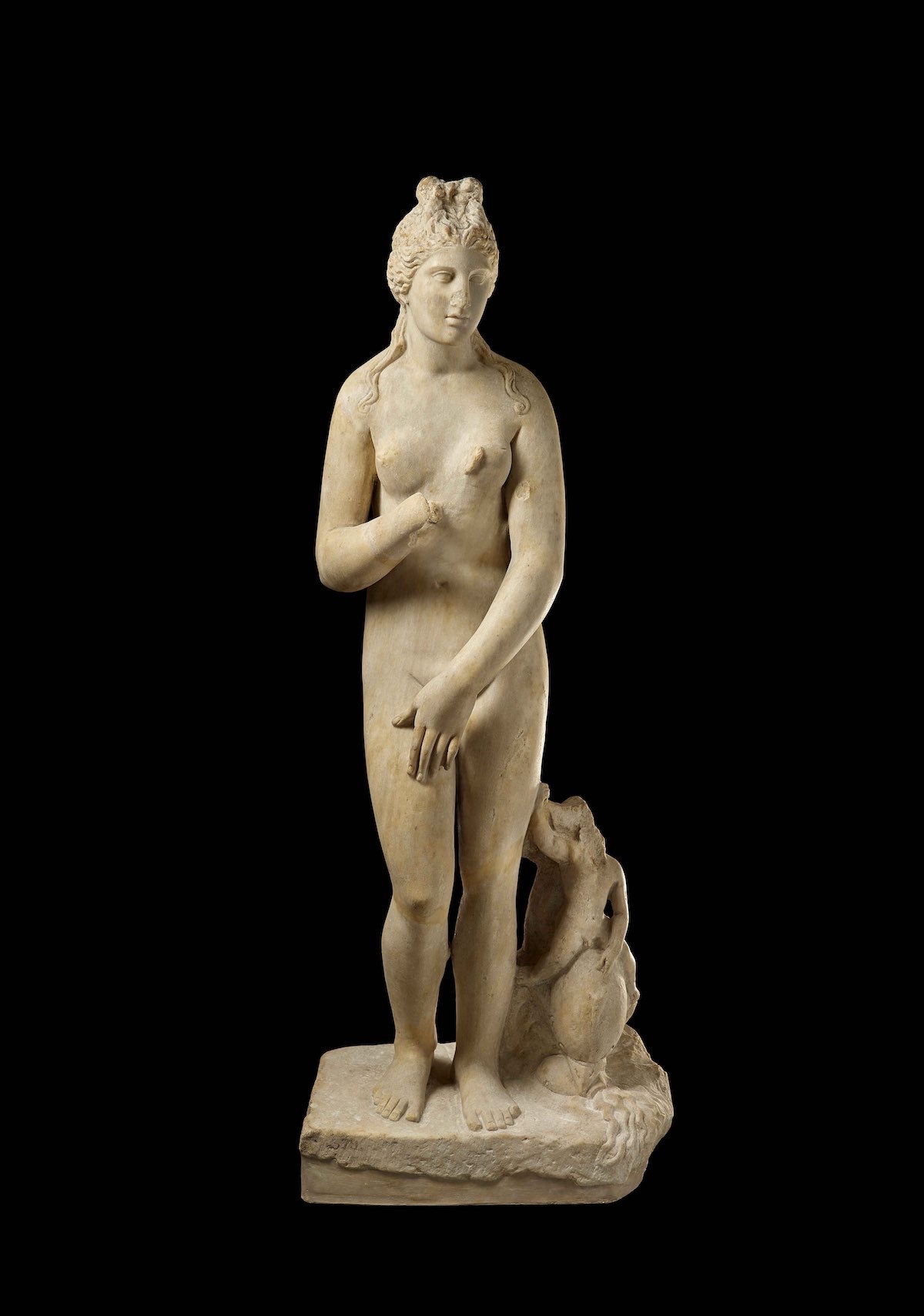
WITH as much marble as any sculpture lover could ask for, a colourful exhibition design and the full-on involvement of the Canberra Greek community, the National Museum’s “Ancient Greeks: Athletes, Warriors and Heroes” seems like a perfect summer blockbuster.
It is the fourth in a series of British Museum exhibitions featured at the NMA. This one will explore the theme of competition through sports, politics, drama, music and warfare through more than 170 objects, including black and red figured ceramics, marble and terracotta statues and reliefs, including fine nudes, bronze figurines, weapons and armour, toys and games, gold jewellery and coins.
The capricious and partisan Greek gods have become a byword for human psychological characteristics.

There’s Dionysos, the god of drama and wine but also of the darker human instincts, of ancient Greece’s most tantalising gods – one impression of him is on the cover of “CityNews”.
There’s the voluptuous Aphrodite, goddess of love and the nemesis of all the heroes and heroines who disobey her injunctions.
There are the great sporting champions, forefathers (for they were male) of our modern-day Olympic Games.
And throughout the exhibition the goddess Nike – the goddess of victory, the one you need to have on your side – features on objects and in the museum’s promotional images.
The sophisticated artisans of Greece who wrought the jewellery and created the vases which were later illustrated by artists are there, giving us an insight into the life of the ancient world.
I caught up with Lily Withycombe, the National Museum’s curator, who has, along with her design and curatorial colleagues, overseen the installation for Canberra.
She believes there is something immediately recognisable and fundamental to our own culture in the ancient Greeks.
It needs to be said that the original British Museum curator, Dr Peter Higgs, selected all the objects we’ll see but two, which were requested by the National Museum of Australia.
“We had some room for negotiation with the British Museum because of our good relationship,” she says.
Those two objects were a vase by Greek vase painter and potter Exekias and a marble relief from Halicarnassus, now in Bodrum in Turkey, a Greek city famed for the tomb of the emperor Mausolus, one of the seven wonders of the ancient world. This is the source of many objects in the exhibition.
Beyond the large marble sculptures, Withycombe is keen to highlight the rich array of objects, including coins, terracotta and everyday items such as diecast voting tickets and metal tools, the strigil to scrape off the oil and dirt before entering the baths.
The Canberra exhibition will look like no other, whether in London, Perth or Tokyo, and the labels will be specific to Canberra, too.
“The interpretive content came to us from the British Museum,” she says.
“But audiences are different in Australia from those in London and so we have edited it quite heavily to be consistent with our own… For instance, we use the expressions BCE and CE instead of BC and AD.”
Probably the most dramatic change will be in the exhibition space created by designer Wendy Osmond, collaborating with graphic designer Virginia Buckingham.
Osmond has translated the British Museum’s vision into 3-D and the whole show has a contemporary look, which picks up on the red and orange of the ceramics to give it a quintessentially Greek look.

It’s well known that after Thessalonica and Athens, Melbourne is the third largest Greek city in the world and there is a very strong Greek presence in the ACT’s history and contemporary life.
Withycombe says the Canberra Greek community has been deeply involved in preparations.
“We will be emphasising the exhibition is a celebration of Greek culture in Australia’s significant diaspora,” she says.
Local Greek community members were shown early proofs of the exhibition design and are getting behind big cultural events and performances, with a load of support from the Hellenic Club and Johnathan Efkarpidis, at Molonglo Group. The arts organisation consulting to them is called Dionysus Cultural Development Enterprises.
“Ancient Greeks: Athletes, Warriors and Heroes”, National Museum of Australia, December 17-May 1. Timed ticketing at onlinesales.centaman.net/NMA
Who can be trusted?
In a world of spin and confusion, there’s never been a more important time to support independent journalism in Canberra.
If you trust our work online and want to enforce the power of independent voices, I invite you to make a small contribution.
Every dollar of support is invested back into our journalism to help keep citynews.com.au strong and free.
Thank you,
Ian Meikle, editor








Leave a Reply